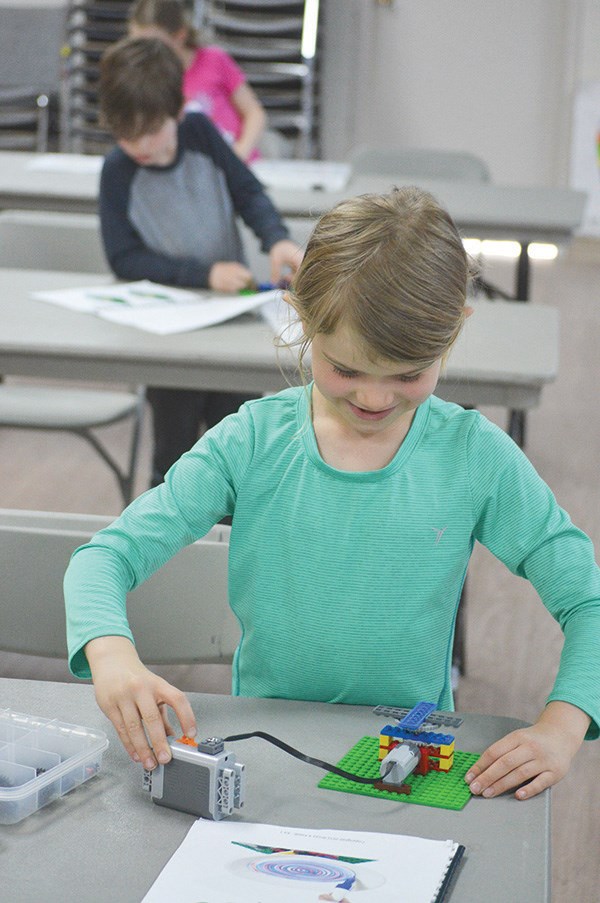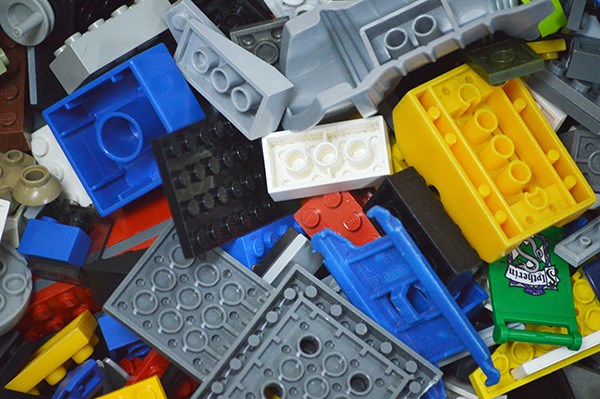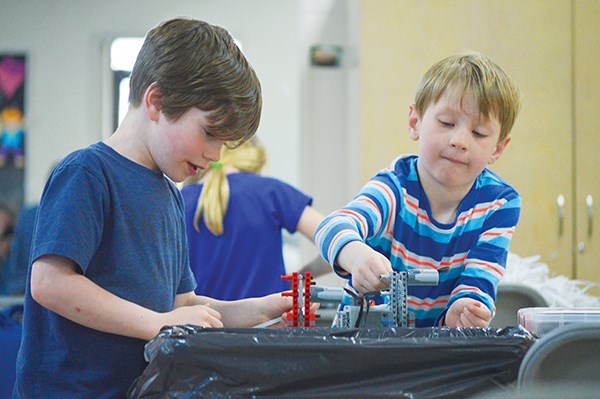Inside the activity room at Brennan Park, a small class of youngsters has been assembling once a week over a six-week span to play with Lego blocks.
At first, they spend time rifling through a big bag that contains all sorts of the interlocking, colourful components, then spend most of the next hour working away on a project.
It is part of program called Bricks 4 Kidz, offered in conjunction with the District of Squamish’s recreation services department.
“Recreation Services is always trying to seek out fun, relevant programming to challenge the mind, body, and spirit. Bricks 4 Kidz offers programming that is educational, works to develop fine motor skills, and encourages participants to access their creativity in a fun, supportive, and social environment,” said the District of Squamish’s director of recreation services, Tim Hoskin.
This is no mere child’s play, though. Through the program, they use Lego to introduce aspects of science, technology, engineering and math – also known as the STEM curriculum – to children at a young age.��
Sometimes this happens at similar summer camps the District of Squamish holds or at roughly a dozen schools in the Sea to Sky Corridor.
“It’s a similar program to what you’re going to see at Brennan Park,” said Ryan Donohue, who coordinates Bricks 4 Kidz from Pemberton to West Vancouver.
Each sessions opens with free time to play with the Lego blocks for about 15 minutes before they move on to the project for the day.
“They sit down and they go through and they build their project,” Donohue said.
The first assignment was for the kids to build a small paper crinkler that uses gears.
“When you’re in Grade 4 or 5, you’ll learn something called simple machines,” Donohue tells the kids, then explains the role of the gears in running the machine.

The kids are already well versed in the world of Lego before coming into the class.
“I already built a whole Lego police station,” youngster Rhys Warburton says proudly.
Bricks 4 Kidz is geared toward teaching the science and math concepts by getting the kids to build, getting them familiar with how machines work.��
“We try to get them to think about constructing and engineering and how to follow plans,” Donohue said.
At one point, one of the kids, Bodhi Griffin, asks why a machine will not work, so Donohue asks him to think it through for the answer, which in this case means the need to add an axel for a gear to run.
For the class, the kids work from exercise books outlining each project and from small kits containing an array of wheels, axels, cam wheels, gear bevels, joiners, O-rings, pulleys and, of course, the famed interlocking bricks, all of which the kids can snap into position.
“We work out of one kit that can build over 150 different creations,” Donohue said.
With older students, the program has branched into robotics using a Lego program called EV3.
“It’s a full-on programming of robots using Lego,” he said.
For small classes of four or five like the one at Brennan Park, the children work individually, though for larger groups, Donohue will sometimes have the kids work as teams in a way that stresses collaboration.
“Here, it’s a non-competitive environment,” he said.
As the first session closes, the kids finish running countless strips of old dot matrix printer paper through their crinklers before starting to clean up – one of the rules of the class. Some innovate by moving large garbage cans nearby so the crinkled paper strips end up right in the can.��
“Oh, now we don’t have to clean up,” one of the students yells out proudly.
Once the paper is all cleared, the children get a few more minutes of free time to play with the loose Lego pieces. At this point, Griffin starts singing “free play” to the tune of the Star Wars theme while he sorts through the coloured bricks.
Donohue has been teaching with Lego for almost three years now, but his background is as a wholesaler and he’s also a paid, on-call firefighter. He decided to look into a Bricks4Kidz franchise and now, he and a few others operate the classes on the West Coast. Franchises are operated around the world, including in Australia, Asia and Africa.
“It’s grown into kind of a worldwide phenomenon,” Donohue said. “It’s overseas now.”
This hardly seems a surprise in light of Lego’s own growth. While the company has been around for a long time, it has undergone a kind of renaissance in recent years, manifesting itself as a theme park, movie and chain stores.
“The Lego, itself, hasn’t changed too much,” Donohue said. “It’s the same old building blocks.”
The Danish company was founded in 1932 and the name comes from two Danish works “leg” and “godt,” which translate as “play well.”��
“It’s our name and it’s our ideal,” the company website states.
In Lego’s first decade, its factory had 10 employees. Eight decades later, according to an annual report, the Lego group was making global annual profits of more than 9 billion Danish krone (or about $1.75 billion) and had announced plans to open or expand plants in the Czech Republic, China, Mexico and Hungary.
The toy has grown so popular, a bit of an underground economy has developed, even in Squamish, where last fall two thieves tried to steal $750 of Lego from a local retailer. A simple Google search will turn up other examples of thefts fuelled by the rising costs, especially for the intricate theme sets.
These themes are one of the newer developments in Legoland. Lego now focusses heavily on kits with themes, often based on franchises like Harry Potter, The Simpsons and Star Wars, to name but a few.

It is this trend that novelist and essayist Michael Chabon bemoans in an essay in his book, Manhood for Amateurs.��
In it, Chabon compares the multi-hued blocks of today and their theme-kits his children have with the simple collection of Lego blocks, primarily in primary colours, from his own childhood.��
The biggest loss, he assumes, is that the kits make play too rigid or pre-established for kids. “Where Lego-building had once been open-ended and exploratory, it now had far more in common with puzzle-solving,” he wrote.
Eventually, though, he realizes his kids find ways to use their imaginations by mixing the pieces from different theme sets together to make things never before seen. As Chabon puts it, “I should have had more faith in my children.”
What Lego used to be like or the history of the company are of little concern to the children at Bricks 4 Kidz, though. Inside Brennan Park, the youngsters are more focussed on the joy of building and applying what they’re learning rather than on the fact that they’re learning at all.��
They’re not even fazed by the photographer moving around the room to snap pictures. There’s a lot, it seems, that a large supply of interlocking plastic toy pieces can accomplish when it comes to getting children interested in learning – and if anyone is worried the classes might be too structured, the kids do get that free play time during which they can let their minds, and their fingertips, go to wherever those little plastic blocks will take them.��




